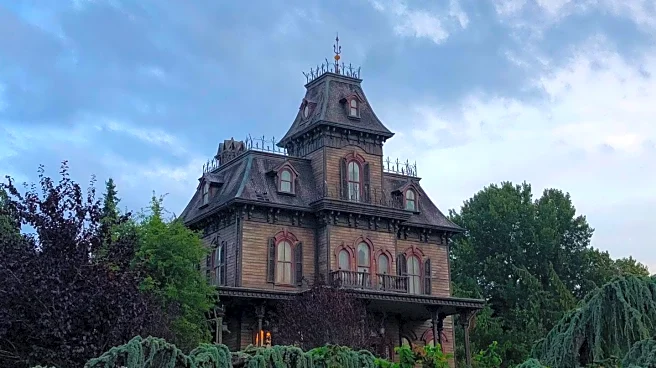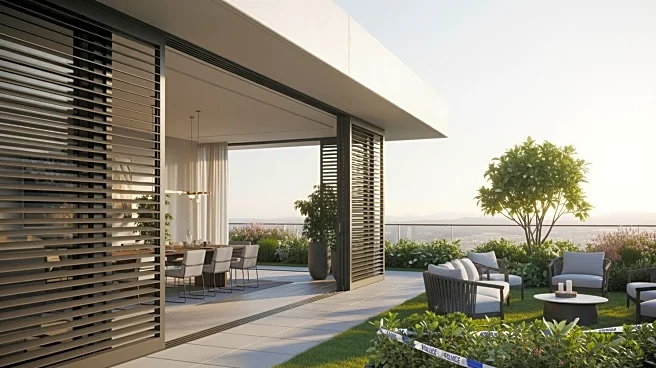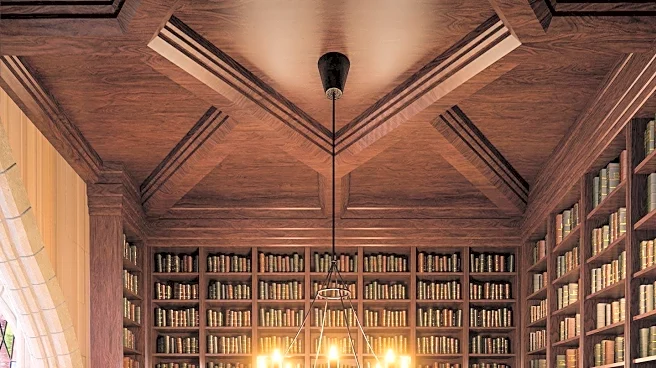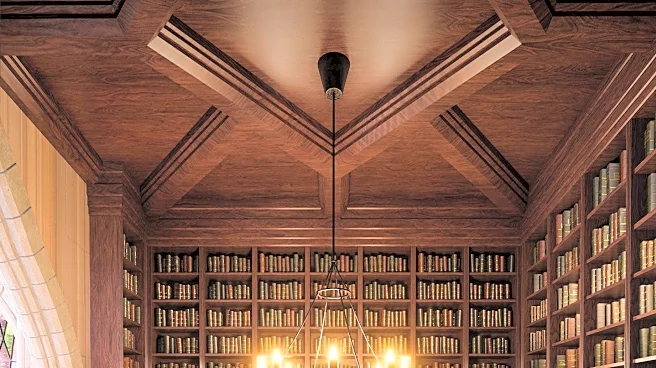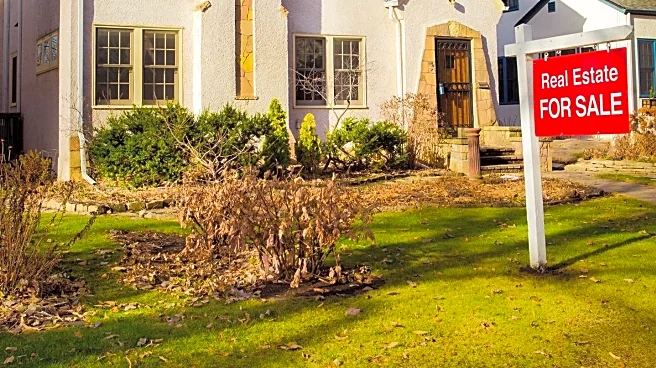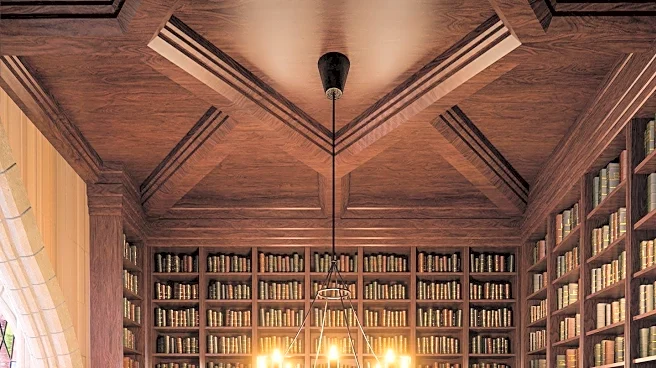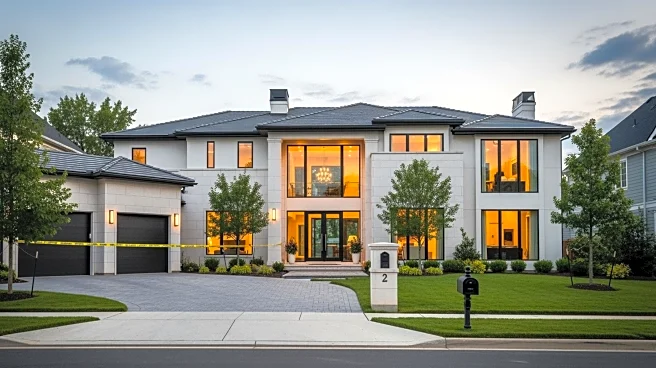What's Happening?
In Columbus, Ohio, a distinctive home known as the 'Book House' has been listed for sale, featuring over 7,000 books integrated into its design. Created by local designer Guy Marshall, the house is a new construction designed to resemble a historic mansion.
The property includes floor-to-ceiling bookshelves, vintage installations, and handcrafted elements like Murphy beds and card catalogs. The house, which spans nearly 5,000 square feet, is currently used as a short-term rental accommodating up to 24 guests. Marshall's innovative use of dyed and treated masonry blocks gives the home a timeless appearance while ensuring modern durability.
Why It's Important?
The listing of the Book House highlights a growing trend in real estate where unique thematic designs are used to attract niche markets. This approach not only adds value to properties but also caters to specific interests, such as literature enthusiasts. The sale of such a property could influence future real estate developments, encouraging builders to incorporate personalized and thematic elements into their designs. Additionally, the use of modern construction techniques to mimic historical aesthetics may appeal to buyers seeking both charm and durability.
What's Next?
The Book House is listed for $1.689 million, and its sale could set a precedent for similar themed properties. As Marshall continues to work on new projects, the success of this sale may influence his future designs and business strategies. Potential buyers interested in unique real estate offerings may be drawn to this property, impacting the local market dynamics. The outcome of this sale could also inspire other designers to explore thematic constructions, potentially leading to a broader trend in the real estate industry.
Beyond the Headlines
The Book House's design raises questions about the intersection of art and functionality in architecture. It challenges traditional notions of home design by integrating cultural elements into the living space, offering a unique experience for residents and guests. This approach may encourage discussions on the role of personal interests in shaping living environments and the potential for homes to serve as cultural landmarks.
